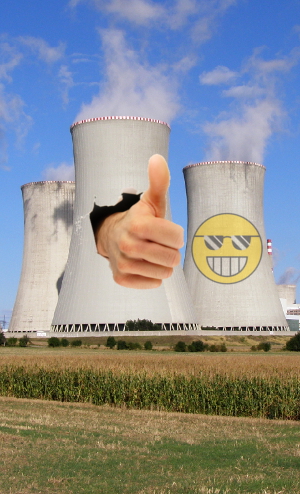Insiders spy nuclear new year
 The director of the Energy Initiative at the University of Queensland says this year could see the rise of nuclear energy as a way for developing nations to provide base load power and keep carbon dioxide emissions down.
The director of the Energy Initiative at the University of Queensland says this year could see the rise of nuclear energy as a way for developing nations to provide base load power and keep carbon dioxide emissions down.
UQ’s Professor Chris Greig says nuclear remains the top zero emissions power source, and will be part of the renewable energy commitment for a range of countries.
World Nuclear Association (WNA) stats show there are currently 437 nuclear reactor power plants across 31 countries, currently producing around 11 per cent of global electricity.
France produces 75 per cent of its electricity from nuclear, while countries like Sweden, Belgium, Switzerland and Ukraine produce an average of 30 per cent of their electricity from nuclear sources.
Professor Greig says these figures will rise.
“Not many new plants are being built in the first world so much, but it's in the developing countries where we're seeing quite a lot of activity,” he told ABC reporters.
“If you look at somewhere like China, they have 17 or so [nuclear reactors] that are currently operational, 28 reactors are currently under construction, and around about 55 are planned to be implemented.
“India has numbers around half that. They have 20 operational reactors now and there's probably another 25 or so that are under construction or planned.
“Also Indonesia, Vietnam, South Korea, all of these sort of countries have nuclear reactors planned.”
But the expert says strong anti-nuclear sentiment has kept nuclear power out of talks on how to reduce carbon emissions.
“There hasn't been a specific acknowledgement that it might have an important role to play [in battling climate change],” he said.
“I mean, it's very low carbon, near zero, just as the renewable energy sources are.
“And it is a base load, always available, electricity source, so in that sense you would think there was a lot of merit in it being a serious option.”
There has been a lot of press lately about the rise of home battery storage, but Professor Greig says it is not a universal fix.
“I think [the ability of] battery storage is a little overhyped, although it certainly has a role to play,” Professor Greig said.
“I think it will be a strong niche in the residential sector, and perhaps the commercial sector, but it's not going to be a player in large scale industrial requirements and grid scale storage.
“Battery storage is still very expensive, and it's all very well for us to chart a theoretical pathway to a lower carbon future and say; ‘There you go, we've got an answer’, but we haven't delivered that.
“At [last year’s Paris climate talks], we heard of grand plans and talk of [non-mandatory] targets that were set, but I don't think we heard a lot about any kind of mechanism or implementation plans to get us to the emissions reduction that we spoken of.
“The ‘how to’ bit is still to come and in the meantime, developing countries will move ahead with developing their energy needs, some of which will be met by nuclear.
“Yes, the cost of nuclear is very high in initial [construction and commissioning] costs, as is the cost of hydropower in many instances, but the ongoing costs are very low compared to the cost of other fuels.
“So there are trade-offs here between high initial costs and low [nuclear plant] life costs.
“It also depends on the jurisdiction; I think the Chinese seem to be building nuclear in reasonably cost effective terms.
“So I don't think it's fair to say it's going to be more costly although certainly, some projects in the US and Europe have blown out.
“But we have to question the issues as to why. A lot of [cost blow outs] are decisions by governments and even delays caused by public reaction and environmental activism.”








 Print
Print